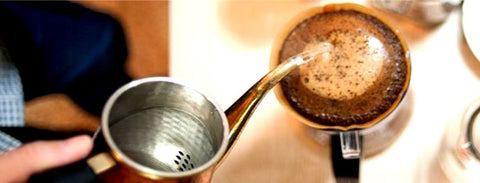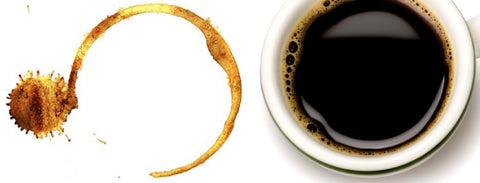Paper filters. Check. Hourglass coffee pot. Check. Fresh ground coffee. Check. Hot water. Check. You’re almost late for work, again. Thank goodness for your simple coffee brewing method. Heat the water while you dress. Pour on the fly as you gather your gear. Grab the to-go mug. Fill it. Out the door. Oh, if all of life were this easy! But something is missing: a pause for a perfect pour over. There is an art to it, and it is well worth adding a few precious minutes to your daily routine.
Even if science was not your forte in school, you will appreciate the beautiful science of the true pour over technique. It is all about timing and composure. A true meditation in action. The perfect pour over technique offers unsurpassed flavor extraction. Every day.
Ever notice how your morning cup tastes slightly different every day? Even though you always use the same beans? It is not a mystery of the twilight zone; it is all about technique. Ah, we are not blaming you for revving up your routine to get the day started. We simply want to invite you to remember one of coffee’s most endearing qualities: It demands full attention and presence. This, right there, is a life saver.
Here is why pour over is so different from other classic immersion brewing methods, such as the French Press, for example. With pour over, the water just passes through; with immersion methods, the grounds remain submerged for an extended period of time. While running water speeds up the extraction, it also means that extraction occurs mainly where the flow of water comes in contact with the coffee grounds. With some beans exposed more than others, the result is an uneven brew and limited flavor extraction.
A slow, steady, circular motion over the grounds as you pour is the obvious solution. This, as you realize, requires patience. You can make it a bit easier on yourself with a gooseneck kettle. This feature slows the flow of water and gives you perfect control for the perfect pour over.
Begin with fresh-roasted, fresh ground coffee. Of course.
The First Pour starts in the center. Slowly expand your circular motions to reach the edge so that all the grounds are evenly moistened. Keep in mind that the coffee grounds are concentrated in the center of the filter cone, so this area requires a bit more water. Do not pour right against the filter yet. Stay on top of the grounds.
Once you have reached the outer perimeter of the coffee grounds, Pause for at least 30 seconds.
Then, pour again, also beginning at the center and moving around toward the outer edge, then returning to the center one last time. You’ll want to time your pouring just right so there is enough water remaining in the kettle to pour over the sides of the filter this time, pushing the coffee grounds in.
There are a few variations to this technique, complete with timers and scales, first blooms and second blooms. They are well worth the time to experiment and you might want to do so at your leisure. We thought we’d offer a slightly condensed version of the process because we understand that while you truly want to savor the precious moments in life, you also need to go places and get things done.
The pour over method is a hands-on method. Let it be a reminder to slow your movements and inhabit a moment, the time of a morning brew.





Comments (0)
There are no comments for this article. Be the first one to leave a message!